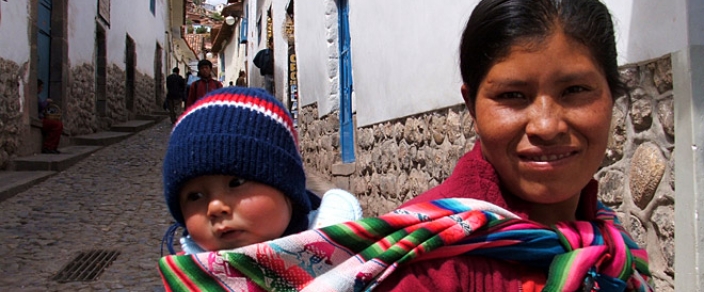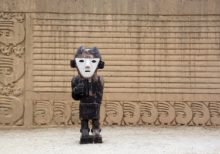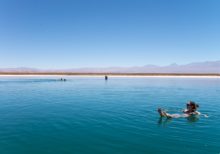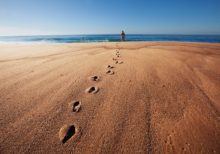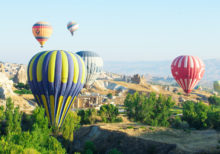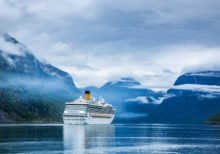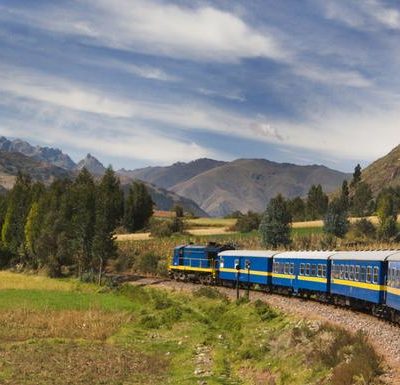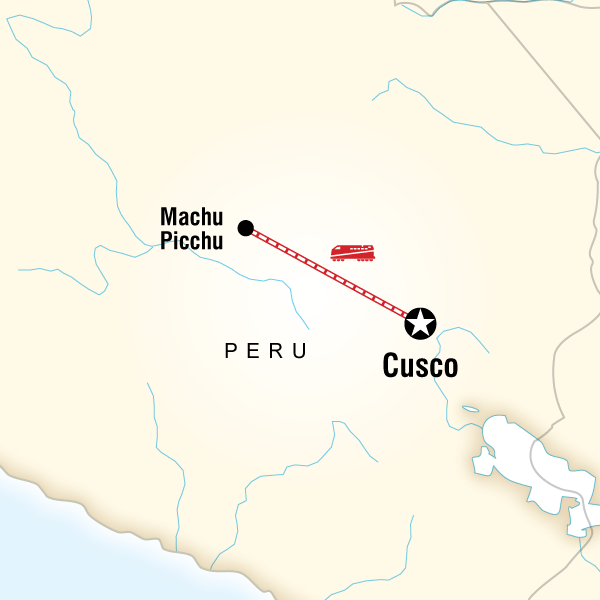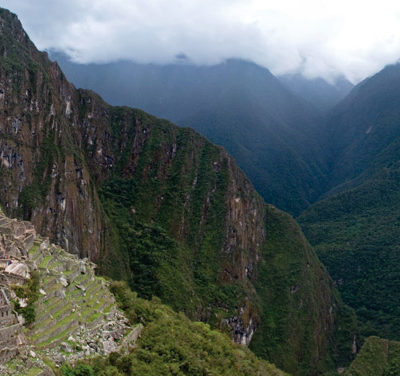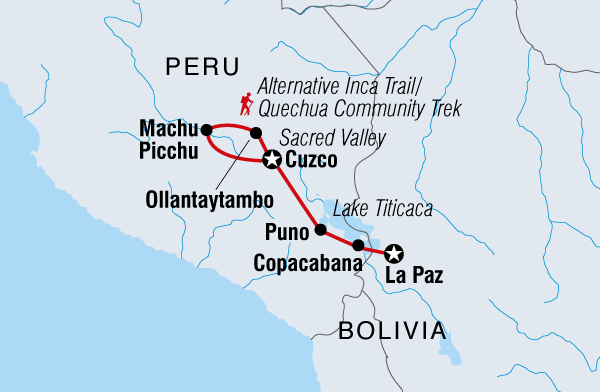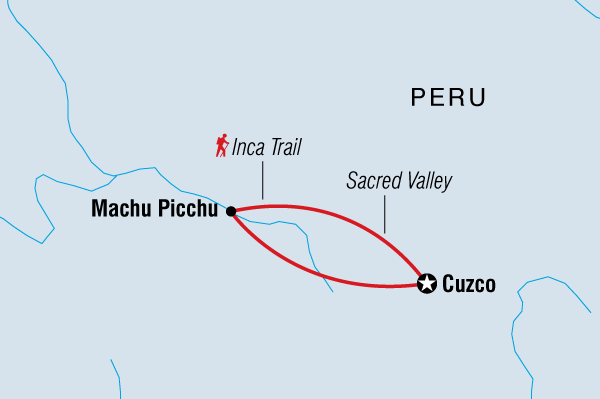| Starts | Lima, Peru |
|---|---|
| Ends | Quito, Ecuador |
| Region | South America & Central America |
| Duration | 24 days |
| Tour Operator | Peregrine |
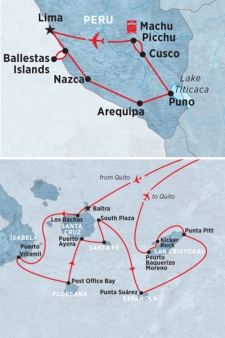
Itinerary
Day 1
Lima
Arrive in Lima and take your complimtary transfer to the joining hotel.Your adventure begins with a welcome meeting at 2pm on Day 1.Please look for a note in the hotel lobby or ask the hotel reception where it will take place. If you can't arrange a flight that will arrive in time, you may wish to arrive a day early so you're able to attend. We'll be happy to book additional accommodation for you (subject to availability). If you're going to be late, please inform the hotel reception. We'll be collecting your insurance details and next of kin information at this meeting, so please ensure you have all these details to provide to your leader.While Peru's capital officially began life in 1535, when Spanish conquistador Francisco Pizarro founded the city on the Day of the Three Kings, settlements had been scattered through the valley since before the Incas. The city was built on top of an existing palace and temples that belonged to the local chief who had little choice but to move on. Lima was in its prime during the Spanish colonial days and much of the city's attraction now lies in its well-preserved historical centre.Tonight you will have the opportunity to go out for your first group dinner.
Day 2
Paracas
On day 2 we travel by minivan to Paracas. This afternoon why not take a visit to the Paracas National Reserve. Home to a large number of birds and wildlife species, Paracas National Reserve helps preserve Peru's marine ecosystem and the cultural heritage of the Paracas people.Spanning 335,000 hectares of land and sea, Paracas National Park is widely regarded as one of the most important marine reserves in the world. This coastal and marine national park is located on a peninsula in the Pacific Ocean and is home to one of the highest concentration of marine birds in the world. Providing a vital habitat for sea lions and dolphins, Paracas is without doubt one of the most biologically diverse coastal areas in the Americas.
Day 3
Nazca
Early in the morning we make our way to Pisco's port before travelling by boat to the Ballestas Islands.Sometimes called the 'Galapagos of Peru', the Ballestas Islands are a haven for wildlife including hundreds of pelicans, red-footed boobies, flamingos, sea lions and even penguins. Get up close to this amazing wildlife with a boat tour of the islands (approx 1.5-2 hrs). Between June and September the port might be closed by the Peruvian Navy due to weather conditions. Should this occur an alternative option of a land tour to the Paracas National Reserve will be offered.Travel from Pisco to Nazca by private van. Driving straight through it would take about 3 hours. However, time permitting we will stop en route at the oasis of Huacachina.The town of Huacachina is built around a small natural lake surrounded by dramatic sand dunes, which offer endless photography and sandboarding opportunities.The entire desert in the Nazca area was once home to the ancient Nazca and Paracas cultures which preceded the Incas by over 500 years. Remains of their cultures are still visible - Nazca is home to the famous and enigmatic Nazca lines, enormous designs inscribed in the desert on the arid high plateau.The enormous lines have been etched into the ground by scraping away the top darker layer of gravel which then contrasts with the paler one underneath. Animals, insects and birds are depicted, and some of the simpler line formations are up to 10 km (32 miles) in length. Who drew them, how and why, can only be guessed at, but theories range from alien invaders to complex Nazca calendars.These mysterious shapes are better seen from the air. Small four/six seater planes offer 30 minute flights that allow viewing all 26 figures scattered through the desert floor.Warning! Planes turn sharply from one side to another to facilitate viewing from both sides of the plane. Plastic bags are provided on board but needless to say, this flight is not recommended for those with a weak stomach.A safety note. A number of local operators offer flights over the Nazca lines. It should be noted that there have been numerous safety issues over Nazca in the past – as such Intrepid has used its best endeavors to assess the safety of the operation of some of these companies. While it is impossible to guarantee the safety of air operations, your leader can only assist you to book this activity through companies Intrepid assesses are safer to fly with. Your leader is specifically prohibited from recommending or assisting booking this activity through any other operators.
Day 4-6
Arequipa
Continue travelling by private van to Arequipa (approx 10 hrs).Standing at the foot of El Misti Volcano and oozing the best of Spanish colonial charm, Arequipa vies with Cuzco for the title of Peru's most attractive city. Built out of a pale volcanic rock called sillar, the old buildings dazzle in the sun, giving the city its nickname - the 'White City'. The main plaza, with its cafes and nearby cathedral, is a lovely place to while away the day. You will have a walking tour of Arequipa with a local guide. The tour includes a visit to the main square, the San Ignacio Chapel with its impressive colonial mural paintings, the Santa Catalina Monastery, and the suburb of Yanahuara.
Day 7-8
Puno
Travel by minivan to Puno on the shores of Lake Titicaca (approx 6 hrs). On the way we stop at the Sillustani archaeological site.Tucked away in between the many small villages around Puno are the ruins of Sillustani. These ruined towers are set on a beautiful peninsula near Lake Umayo, built by a pre-Inca civilisation hundreds of years ago. The Sillustani Indians built several 'chullpas', funeral towers. Each tower would have contained the remains of noble men, buried together with offerings to secure their comfortable passage into the next life.Located on the shores of Lake Titicaca, Puno is a melting pot of Aymara and Quechuan Indian culture and traditional Andean customs are still strongly represented here. The town is known as the folklore capital of Peru and is famous for its traditional dances. Many festivals are celebrated here, so if you're lucky your visit might coincide with one of the colourful evening parades, when the streets fill with costumed dancers and musicians.Tour the lake by slow motor boat stopping off to visit the floating islands. The Uros originally built the islands from many layers of totora reeds that grow in the lake's shallows to isolate themselves from the rival tribes. As the reeds closest to the water begin to rot, more layers are added on top. These reeds are used for making everything on the islands, including the boats which can last up to 12 months.We will also visit the Taquile Island, where knitting is strictly a male domain and women do the spinning. This is a great place to pick up some high quality, locally knitted goods. To reach the main part of the island there is a an uphill trek (approx 1 hour) with great views of the lake. There will also be an optional lunch consisting of a basic set meal where you can taste the nutritious quinua soup and enjoy a muna tea (Andean mint tea).A descent of approx 500 steps brings us back to the boat which will take us all the way back to Puno (approx 3 hours).Tonight there's an included dinner in Puno.
Day 9-10
Cusco
Travel by local bus across the spectacular Altiplano to Cuzco (approx 6 hrs).The Cuzco region truly is the heart and soul of Peru. The city itself is the continent's oldest continuously inhabited city and was the home of the Incas for two centuries before the Spanish built their first capital here. Today Cuzco is a fascinating combination of both cultures. Inca-built walls line the central streets and many of the elegant colonial buildings are built on or around Inca foundations. This is a city steeped in history, tradition and legend and is a perfect base for explorations into the Inca world or to enjoy a range of outdoor activities.Take the time to acclimatise to the city's 3,450 m (11,150 ft) altitude and explore the many Baroque churches and ancient temples that dot the city.Your leader will take you on a walking tour including a visit to the Coca Musuem - where you can learn more about this infamous plant which has been an essential part of life in the Andes for centuries - and the local San Pedro market.The cathedral, built on top of an Inca palace, dominates the Plaza de Armas, Cuzco's picturesque heart. The cathedral is one of the city's greatest repositories of art and houses an elegantly carved choir stall and a silver-covered Neoclassic altar.There are several impressive Inca ruins within the city. The most easily accessible is Coricancha, which was the Inca empire's richest temple. Once plated in thick gold, the Spanish built a Dominican church atop its sturdy walls.For lunch or mid-morning coffee and cake head to Yanapay restaurant at 415 Ruinas St. This restaurant uses all its profits to support children in Cuzco through Aldea Yanapay and its social projects. For more info on Aldea Yanapay visit: http://yanapay.facipub.com/
Day 11
Sacred Valley/Ollantaytambo
Travel by private bus through the Sacred Valley (approx 1.5 hrs total travel time). Known as Wilcamayo by the Incas, the lush, fertile valley has long been the main source of food for the high Andes. Maize crops can be seen surrounding the river and covering the terraces carved high into the valley walls.We'll head to a community along the valley to learn about local lifestyle and activities, and if our visit coincides with market day, we can spend time browsing the stalls in search of hand-painted beads or warm ponchos and maybe practising a little bit of the local language, Quechua. Lunch is provided today by the local community.Continue the journey to Ollantaytambo.The town of Ollantaytambo has been built over an ancient Inca town, which is a magnificent example of Inca urban planning. This is one of the few places where the Incas defeated the Spanish.Ollantaytambo's archaeological site is located to the east of the Plaza de Armas. The upper terraces of this site offer great photo opportunities of the squared grid town below.Today you'll leave most of your luggage in Cuzco while we visit the Sacred Valley, Aguas Calientes and Machu Picchu. Please make sure you have a small backpack to carry the necessary items for the three days ahead.
Day 12
Aguas Calientes
Travel by train through the winding Urubamba Valley to Aguas Calientes (approx 90 mins).Aguas Calientes is nestled in the cloud forest at the foot of Machu Picchu.While away your free time in the natural hot springs that give the town its name.
Day 13
Machu Picchu - Cusco
Take a bus up the winding road to Machu Picchu (approx 30 mins).While it's thought Machu Picchu was built around 1440 as a country retreat for Incan nobility, there is evidence this had been a sacred Incan site for much longer. Another school of thought is that this was an astronomical observatory. There's plenty of time for you to decide for yourself as you wander around the many temples, palaces and living quarters. You will have a guided visit (approx 1.5-2 hrs) with plenty of free time afterwards. After taking advantage of the seemingly endless photo opportunities, it's time to return to Cuzco for a well deserved shower and a pisco sour.
Day 14-15
Lima - Quito
Fly from Cuzco back to Lima (approx 1 hr)Once settled into your hotel in Lima you will start your exploration of the Peruvian capital with a half-day city tour. Founded in 1535 by the Spanish conquistador, Francisco Pizarro, it was from Lima that all Spanish territories in South America were governed. Few cities at that time could rival Lima’s power, wealth and opulence. However its glory days ended in 1746 when the city was virtually destroyed by an earthquake. Many of the colonial buildings were rebuilt and you will get a first-hand look at several of them on the tour. The striking Plaza Mayor (Plaza de Armas), flanked by some of the most important buildings in town such as the cathedral, the huge Government Palace and the Archbishop’s Palace, constitutes the heart of the city.You will visit the nearby San Francisco Monastery, with its catacombs containing some 70,000 human remains. Next we will visit the Central market where we will take a walking tour. The market has a huge variety of fresh produce on offer including fruits, vegetables and even Guinea pigs. You will have the opportunity to try some local Peruvian fruits and street food.This will be followed by a visit to China town, which is nearby the Market.The tour will finish in Lima main square, with the option to go for dinner in downtown or back to Miraflores.In your spare time you might enjoy wandering around Miraflores, visiting Parque del Amor (Love's Park) where you can enjoy a view across Lima's beaches, or catching a taxi to visit the Gold Museum or the Larco Museum, which is renowned for its ancient pottery collection. Please remember that you must agree on a fare with the driver before catching a taxi, as the taxis here do not have meters. (Miraflores-downtown approximately 10-15 soles). You may also want to visit the impressive National Museum of Anthropology, Archaeology and History of Peru, which is home to a wonderful collection of cultural exhibits tracing the history, arts and accomplishments of the people of Peru, ranging from the original inhabitants of the land through to the Inca Empire and the Spanish conquerors.There are a number of restaurants and cafes to choose from for dinner. Lima has some of the most superb cuisine in South America and is especially renowned for its exceptional seafood. During your time here, you may wish to try ceviche, Peru’s national dish, which is raw fish marinated in lime juice and often served with hot peppers. This culinary delight is a must for all seafood lovers!The following day (day 15) Please book your flight from Lima to Quito.Please ensure we are aware of these details so transfers can be arranged for you.The following day you will meet your fellow Galapagos travelers.
Day 16
Morning flight to Baltra, transfer to the M.C Queen Beatriz. Visit Punta Carrión.
This morning you will be transferred to the airport for your flight to the Galapagos Islands. Please note the pick-up time will usually be as early as 4am as the airport is a one hour drive and you must allow for delays and check-in times. (Your tour leader will confirm this time with you at the pre-departure meeting on Day 1.A US$10 per person transit card is payable on departure at Quito Airport (** Please note that effective from 01 March 2015, the transit card fee will be US$20 **) and a US$100 per person national park entry fee is payable on arrival on the islands. Please have cash on hand for these transactions as using credit cards can be time consuming.You will be met in the arrival hall of the airport by a National Park Guide, and transferred to the catamaran ‘M.C Queen Beatriz’. Lunch will be served on the boat.Your first stop in the afternoon will be Punta Carrion, located in north-eastern Santa Cruz. This is a shallow and protected cove, ideal for your first snorkel and swim in the Galapagos! Wildlife is plentiful; keep your eyes peeled for blue-footed boobies, Galapagos herons, great blue herons and underwater swim among rays and white-tipped reef sharks.
Day 17
Isla Isabela, including Tintoreras, Giant Tortoise Breeding Center and the Wall of Tears.
Today you will wake up on the South Coast of Isla Isabela, the largest of the Galapagos Archipelago. Isabela was formed by five giant volcanic craters, all of which are still considered active. The island is located in one of the youngest geological areas in the world, having been formed less than 1 million years ago.This southern coast of turquoise blue waters has the largest area of beaches in the Galapagos. You will visit Las Tintoreras, where from the viewing walkway you can look down into this narrow channel to see a colony of white-tipped reef sharks swimming and sleeping, and the occasional playful sea lion among them!Blue-footed boobies and penguins, marine iguanas and crabs also make their home here, and the waters provide further opportunities to swim with turtles. Here you will also visit the Giant Tortoise breeding centre and the Wall of Tears, constructed from lava by prisoners of the penal colony here between 1946 and 1959 as punishment.Please note there's a US$20 fee to be paid upon entering Isla Isabela.
Day 18
Cruise to Isla Floreana, exploring Post Office Bay, Devil's Crown and Punta Cormorant.
The island of Floreana is a highlight of any Galapagos cruise, rich in natural wonders and wildlife. You will go ashore at Punta Cormorant where the sand is made up of fine olivine crystals, a glassy volcanic mineral, giving the beach an olive-green colour. It is the best place to see Galapagos sea lions.Today is also one of your finest opportunities to see pink flamingos and other water birds wading in the lagoons, including pintails and stilts. Just offshore, the Devil’s Crown is an old eroded volcanic cone and a popular roosting site for seabirds such as boobies, pelicans and frigates. Red-billed tropicbirds can also be seen nesting in the rocky crevices.The centre of the cone is an outstanding snorkelling spot, perhaps the most remarkable in the entire archipelago, full of sea lions and colourful fish. Floreana is also home to Post Office Bay, where 18th century whalers used a barrel as an unofficial mail drop. This custom continues to this day with visitors to the Galapagos – post one of your own, or see if there are any you could deliver back home!
Day 19
Isla Santa Cruz, visiting Charles Darwin Station and the Highlands.
Today you will visit Santa Cruz, the second largest island in the Galapagos. The small town of Puerto Ayora is the economic centre of the archipelago, and home to the Charles Darwin Research Station. As well as undertaking vital conservation work, the station also makes for interesting exploration and offers the best opportunities for close encounters with giant tortoises. You will also observe baby tortoises and land iguanas.Afterward you will head up into the highlands for a total change of scenery. Beginning at the coast you'll travel across Santa Cruz through the agricultural region and into the misty forests. This is a lush humid zone containing miconia bushes, scalesia and inactive volcanic cones. Santa Cruz has more endemic plants than any of the other islands and you are likely to see Galapagos giant tortoises in their natural habitat and perhaps even the bright red feathers of a vermillion flycatcher!
Day 20
Visit Isla Santa Fe and Isla Plaza Sur.
Santa Fe is home to more sea lions, and these ones are very eager for swimming partners! It’s a lovely place to take a dip, and the landscape on the inland trails is also beautiful, with cacti forests home to a unique sub-species of land iguanas. Hiking towards the cliffs on Santa Fe will lead you to a forest of prickly pear cactus.A member of the cactus family, their name comes from the pear shaped fruit the plant produces. Santa Fe is home to endemic land iguanas. Once back at the beach you will have free time to snorkel back in the lagoon. Playful sea lions pups and florescent fish make for fascinating company.A small island, Plaza Sur is nonetheless a place of great beauty, where you will get close to sea lions and onto trails past one of the Galapagos’ largest land iguana populations, resting amid cacti and volcanic landscapes coloured bright red and green by sesuvium. The island’s rugged southern cliffs are an excellent place to spot tropicbirds and swallow-tailed gulls, as well as ‘the gentlemen’s club’, a gathering of male sea lions either too young or too old to be beachmasters!
Day 21
Isla Espanola, including Bahia Gardner and Punta Suarez.
Today you will cruise to the island of Española - the southernmost island of the Galapagos and one of the most spectacular. Because of its remote location, this island has a large population of endemic fauna. It is the breeding site for nearly all of the world's 12,000 pairs of waved albatrosses and also home to colonies of blue-footed and masked boobies.Trails from the golden beaches, where sea lions bathe and marine iguanas make their way towards the water, will lead you right through the middle of booby colonies, and Galapagos doves and mockingbirds are also often seen. You will also visit the beautiful white sandy beaches at Bahia Gardner, which are great places for swimming and relaxing. The rocks off the coast provide excellent snorkelling opportunities, with reef sharks, turtles and many species of tropical fish, including surgeon and angelfish, often seen. The small white-tipped reef sharks are also often spotted resting under the rocks.You will also pay a visit to Punta Suarez, one of the most attractive locations in the Galapagos and home to large and varied wildlife population - a walk along its trails will take you to a cliff top viewpoint, where you'll gain a magical panorama. Boobies line the rocky shoreline beneath you, while frigate birds may be seen overhead; nearby enormous male sea lions can be seen lounging and albatross use the cliffs as their ‘runway’, helping become airborne by the southeast winds that blow across this part of the island.If you’re lucky you’ll see the elaborate courtship rituals performed by albatrosses before the female chooses her lifelong mate!
Day 22
Cruise to Isla San Cristobál, visiting Leon Dormido, Isla Lobos and Punta Pitt.
This morning you will visit Punta Pitt on the eastern end of Isla San Cristobál. Walk to the top of the volcanic hill for expansive views of the sparsely vegetated area. A variety of seabirds nest here, including blue-footed boobies, red-footed boobies and frigates.Close by you will pass through Leon Dormido (Kicker Rock), which is a magnificent rock in the middle of the sea, the shape resembles a sleeping lion. The rock rises 150 metres above the surface and is divided into two parts by a narrow channel.You will also visit Isla Lobos, a tiny island almost touching Isla San Cristobál. This is the perfect time to witness the always friendly sea lions as they play in the calm shallow waters here.
Day 23
Fly from San Cristobál to Quito.
Visit the Interpretation Centre in the morning. The centre brings the history and geography of the archipelago to life, from its volcanic origins to the present day. The human history exhibit offers an insight into the discovery and colonisation of the Galapagos, and the reality of the problems the islands face today is also explored.This is a great way to complete your time in the Galapagos. This will be your final excursion before you head to the airport in San Cristobál for your flight back to Quito. As you will be leaving the boat this morning, please remember that if you have enjoyed the services provided by your guide and crew, a tip would be very much appreciated by them.As a guideline we recommend each passenger consider US$15 per day for the crew and US$10 per day for your guide. You can leave tips in envelopes that are placed in your cabin on this last day of your journey. Upon arrival in Quito Airport you are transferred back to our hotel for an overnight stay.
Day 24
Quito
Your tour ends after breakfast today. You have today free in Quito and it is always fascinating to wander around the cobbled streets of the Old City, which is full of impressive colonial architecture and character. The Monastery of San Francisco is a fine example of Spanish Baroque architecture and its initial construction dates to 1534, which was the year the city was founded. You can also arrange an excursion to visit the Equator line at Mitad del Mundo or visit the colourful market town of Otavalo, famous for its beautiful Andean handicrafts.
View Dates

